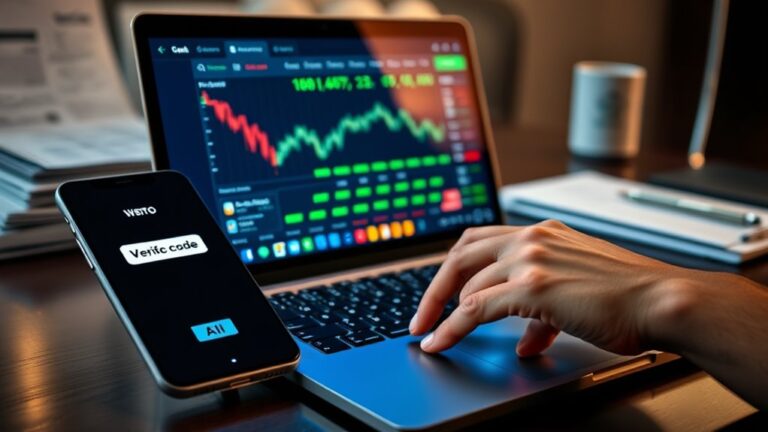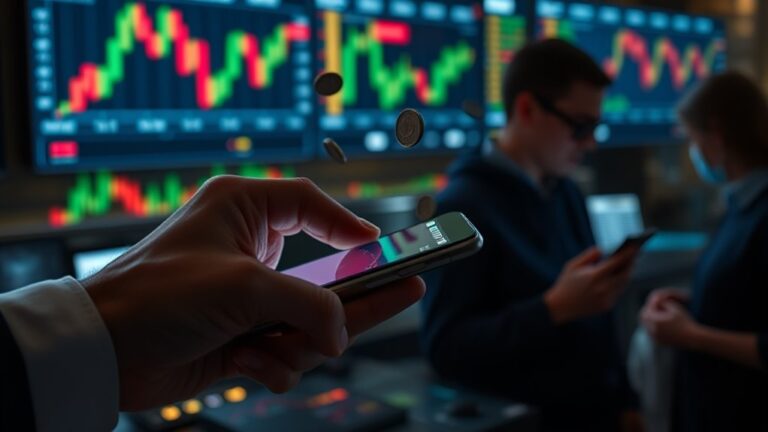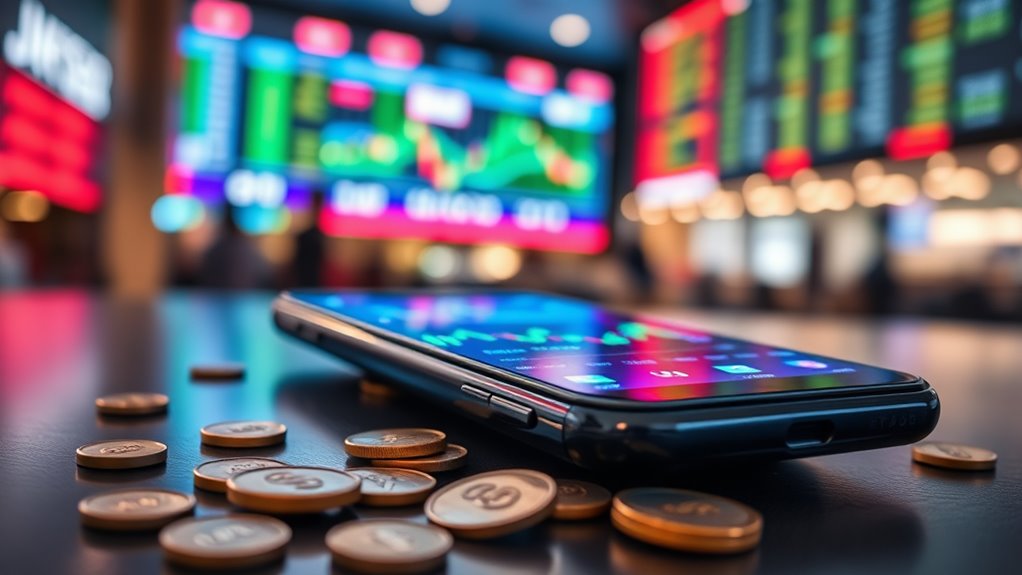
Trading Fees and Costs Explained: What You Need to Know?
Trading fees encompass three main categories: trading, withdrawal, and deposit fees. Exchanges typically use maker-taker models, where market order takers pay higher fees than limit order makers. These costs greatly impact returns, especially for frequent traders during volatile market conditions. Traders can minimize expenses by using exchange tokens for discounts, trading during off-peak hours, and consolidating transactions. Beyond standard fees, hidden costs include cash sweeps, payment for order flow, and bid-ask spreads. Further exploration reveals additional strategies for fee optimization.
Key Takeaways
- Trading fees use a maker-taker model where market orders (takers) typically cost more than limit orders (makers).
- Frequent trading increases fee accumulation, which can significantly erode investment returns over time.
- Many exchanges offer tiered fee structures that reward high-volume traders with progressively lower rates.
- Exchange-specific tokens can provide substantial fee discounts, sometimes up to 25% off standard rates.
- Hidden costs beyond standard trading fees include bid-ask spreads, currency conversion charges, and payment for order flow.
Breaking Down Different Types of Crypto Exchange Fees
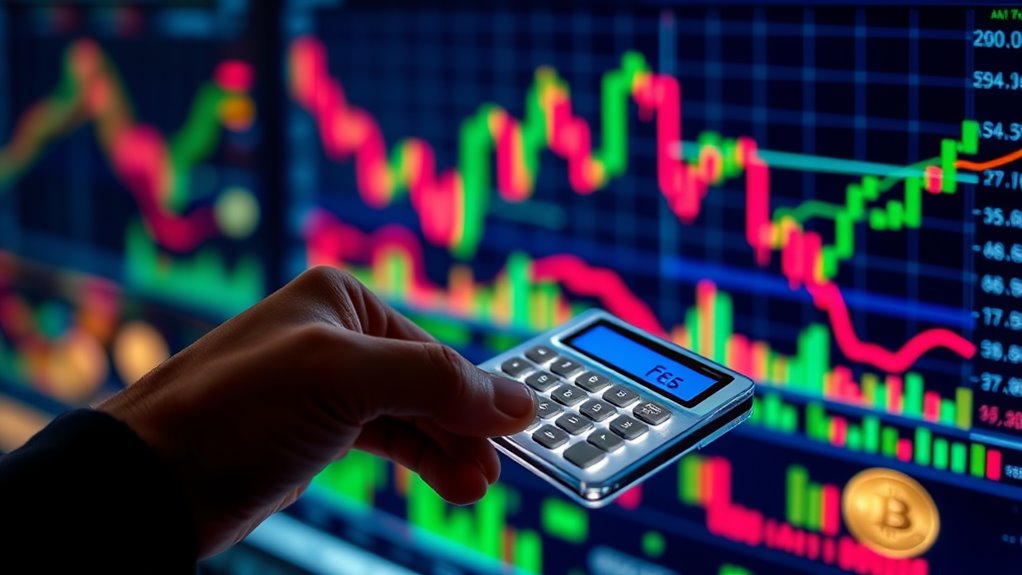
When maneuvering through the cryptocurrency trading landscape, traders inevitably encounter a complex array of fees that can greatly impact their investment returns.
These costs typically fall into three main categories: trading fees, withdrawal fees, and deposit fees.
Trading fees operate on a maker/taker model, where makers who add liquidity through limit orders generally pay lower fees than takers who remove liquidity by filling existing orders.
Most exchanges implement tiered fee structures based on trading volume, rewarding high-volume traders with reduced rates.
Deposit and withdrawal fees vary considerably across platforms.
While crypto deposits are often free, withdrawals incur blockchain network fees that fluctuate with network congestion.
These network or “gas” fees compensate miners for transaction verification and can markedly differ between various cryptocurrencies and blockchain networks. Moreover, choosing a platform with strong security features can further safeguard your investments from potential threats.
How Trading Fees Impact Your Cryptocurrency Returns

The cumulative effect of trading fees on cryptocurrency investments often goes unnoticed until traders analyze their long-term performance metrics. These fees compound over time, potentially reducing profits by half in high-frequency trading scenarios.
Several factors influence how considerably fees affect returns:
- Trading frequency – More frequent trading leads to greater fee accumulation, directly impacting profitability.
- Market conditions – Volatility and low liquidity increase trading costs through wider spreads.
- Exchange selection – Fee structures vary considerably between platforms, affecting overall returns. For instance, platforms like Binance Academy provide considerable educational resources that can help traders make informed decisions about fees.
- Portfolio rebalancing approach – Higher tolerance bands in rebalancing strategies can mitigate fee impact.
Even with fees, strategic rebalancing typically outperforms simple HODL strategies.
Traders can minimize fee impact by using limit orders, trading during off-peak hours, and leveraging exchange-native tokens for discounts.
Exchange Fee Structures: Maker vs. Taker Models Explained
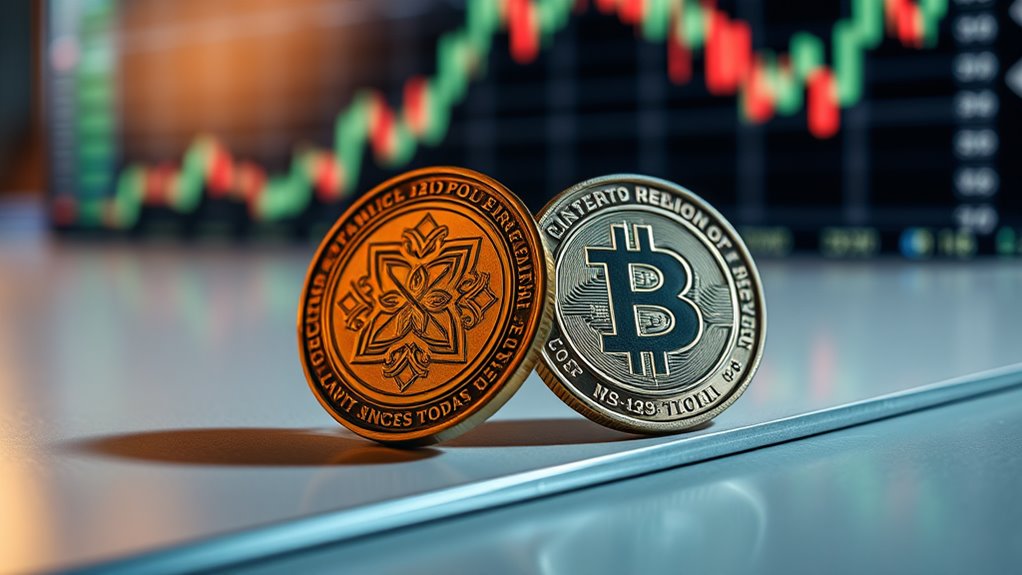
Understanding how cryptocurrency exchanges charge for transactions reveals a sophisticated system designed to balance market liquidity and operational costs.
Most platforms employ a maker-taker model, where participants are classified based on how they interact with the market. Makers provide liquidity by placing limit orders that don’t execute immediately, adding depth to order books. As compensation for this service, makers typically receive rebates ranging from 0.2-0.4 basis points.
Takers, conversely, consume liquidity through market orders that execute immediately against existing orders, paying fees of 0.3-0.5 basis points.
Exchange fee structures vary widely, with some platforms offering tiered pricing based on trading volume, while others implement flat or even inverted models. Regional regulations and specific trading conditions further influence these structures, creating a complex landscape for traders to navigate. Understanding the security tips offered by exchanges can help traders minimize risks associated with transaction fees.
Strategies to Minimize Fees When Trading Digital Assets
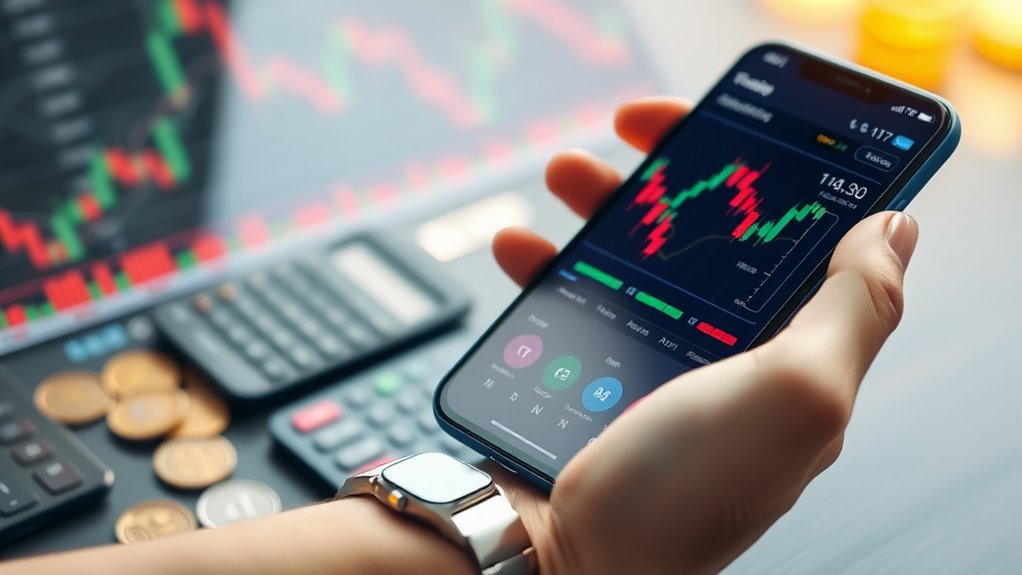
Every savvy digital asset trader recognizes that transaction fees can considerably erode investment returns over time, making fee minimization an essential component of successful trading strategies.
By implementing strategic approaches, traders can considerably reduce their overall trading costs and improve profitability.
Four effective fee-reduction strategies include:
- Utilizing exchange-specific tokens like BNB or FTT to access substantial fee discounts, sometimes up to 25% on platforms like Binance.
- Trading during off-peak hours when network congestion is lower, particularly on weekends or early UTC mornings.
- Consolidating multiple trades into fewer transactions whenever possible to minimize the total fee burden.
- Leveraging Layer-2 solutions such as Polygon or Optimism that offer considerably lower transaction costs compared to mainnet operations.
Additionally, understanding security measures is crucial, as they can protect your investments against potential losses from unauthorized access.
Hidden Costs Beyond Standard Trading Fees

While strategies to minimize standard fees are valuable, traders must also recognize numerous hidden costs that can silently drain profits from their portfolios. These expenses often remain undisclosed in marketing materials but greatly impact overall returns.
| Hidden Cost Category | Impact on Traders |
|---|---|
| Cash Sweeps | Lost interest on uninvested cash |
| Payment for Order Flow | Potentially inferior trade execution |
| Bid-Ask Spreads | Price differences between buying and selling |
| Currency Conversion | Unexpected costs in international trading |
| Account Management | Maintenance fees, overdraft charges, ATM fees |
Traders should also consider the impact of markups on bond transactions, where differences between wholesale and retail prices create additional expenses. Market timing and order routing decisions further influence total trading costs. Understanding these less visible expenses enables investors to make more accurate assessments of their true investment performance.
Frequently Asked Questions
Are Trading Fees Tax-Deductible for Individual Investors?
Trading fees for individual investors are not tax-deductible. Instead, these fees can be added to the cost basis of investments or subtracted from sale proceeds, which affects capital gains calculations for tax purposes.
How Do Fees Compare Between Traditional Brokers and Robo-Advisors?
While traditional brokers charge you for “expert” decisions, robo-advisors typically offer lower costs (around 0.25% annually) versus traditional brokers’ higher per-trade fees ($5-$20) and possible account management charges.
Can Trading Fees Be Negotiated With Brokers?
Trading fees can sometimes be negotiated, particularly with full-service brokers. Clients with high trading volumes, long-standing relationships, or during competitive market conditions may have more leverage in fee discussions with their brokers.
Do Trading Fees Apply When Transferring Assets Between Accounts?
In the most shocking revelation for investors, trading fees don’t apply when transferring assets between accounts. Instead, brokerage firms typically charge separate account transfer fees, which are fixed rather than transaction-based like trading fees.
How Have Trading Fees Evolved Over the Past Decade?
Trading fees have dramatically declined over the past decade, culminating in the widespread adoption of zero-commission trading by 2019. Brokers shifted to alternative revenue models while expanding service offerings to remain competitive.
Conclusion
Understanding trading fees is essential for profitable cryptocurrency investing. Consider the case of Maria, who saved nearly $350 annually by switching from a platform charging 0.5% per trade to one with a 0.1% fee structure on her monthly $7,000 trading volume. By researching fee schedules, utilizing limit orders, and watching for hidden costs, traders can greatly improve their long-term investment returns.






